To help us provide you with free impartial advice, we may earn a commission if you buy through links on our site. Learn more
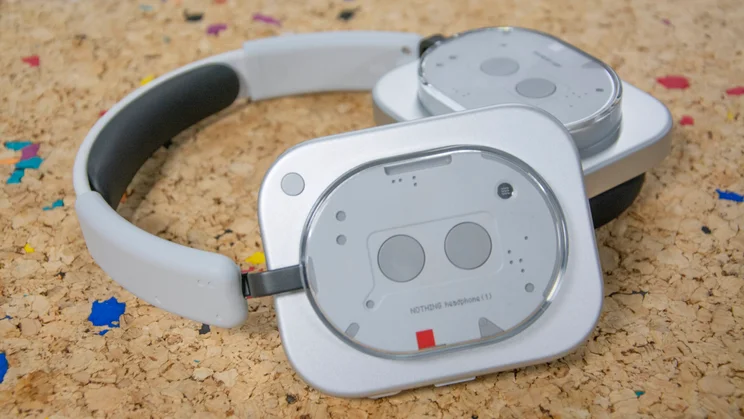

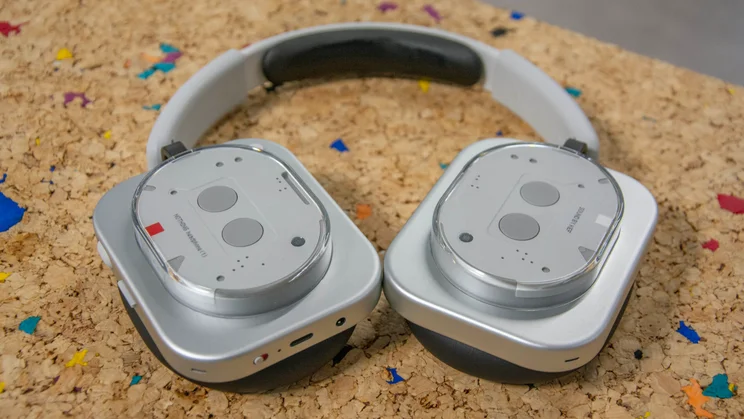
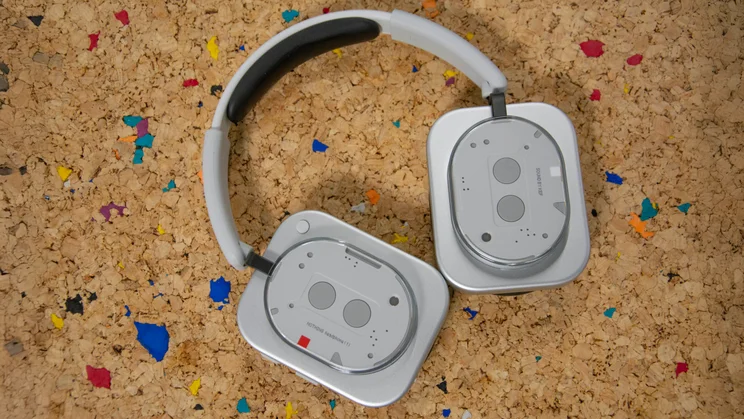
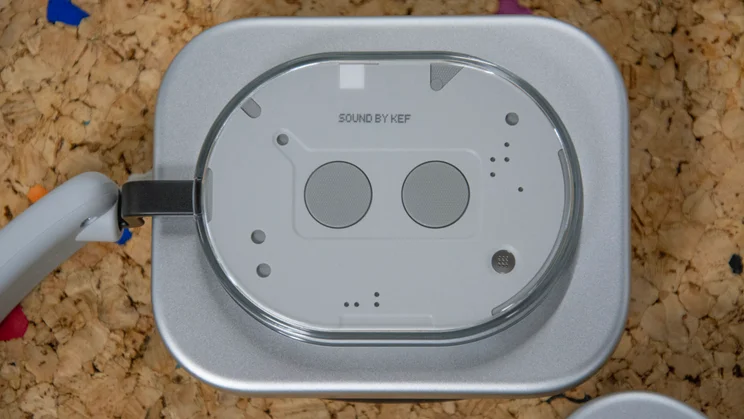

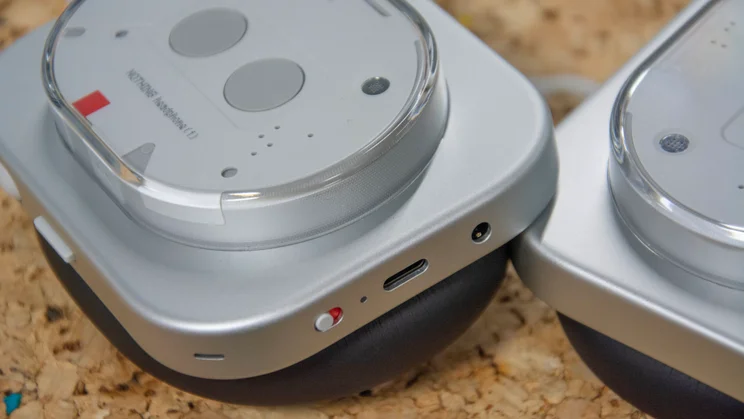
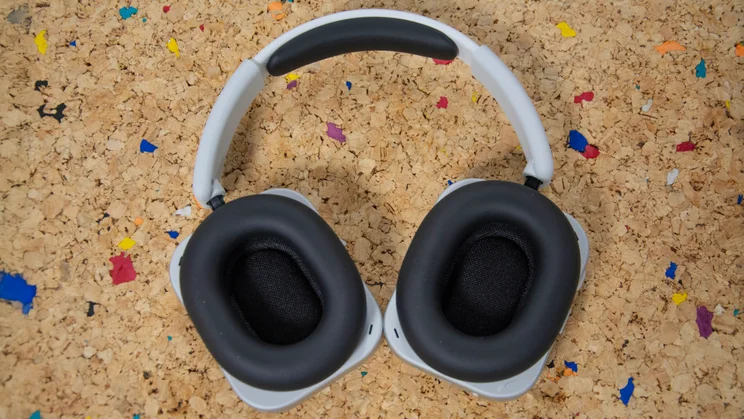
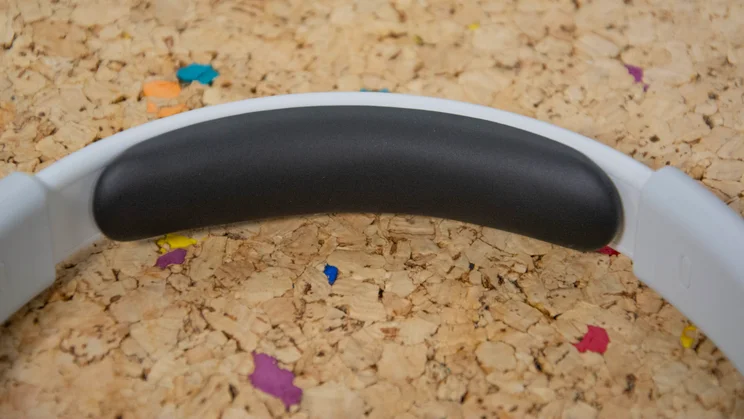
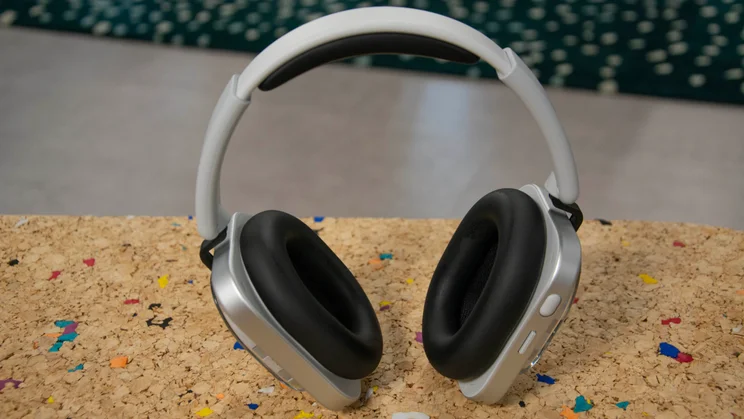
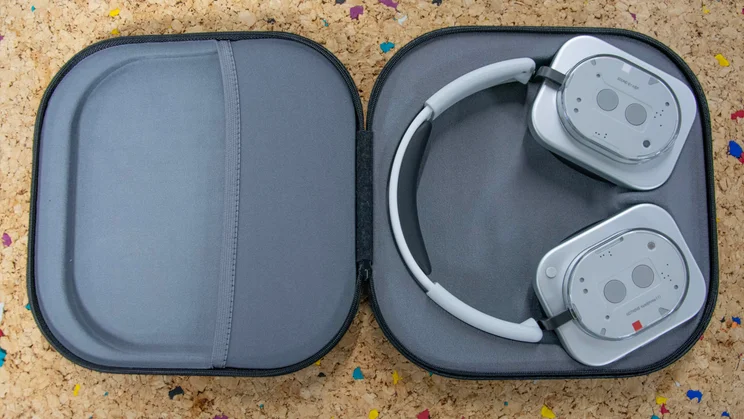
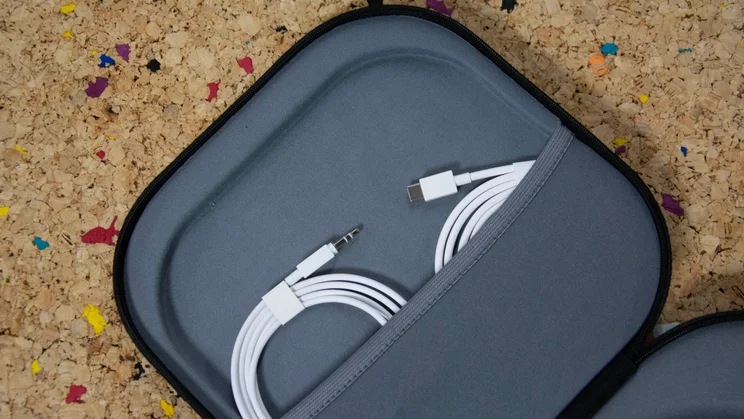
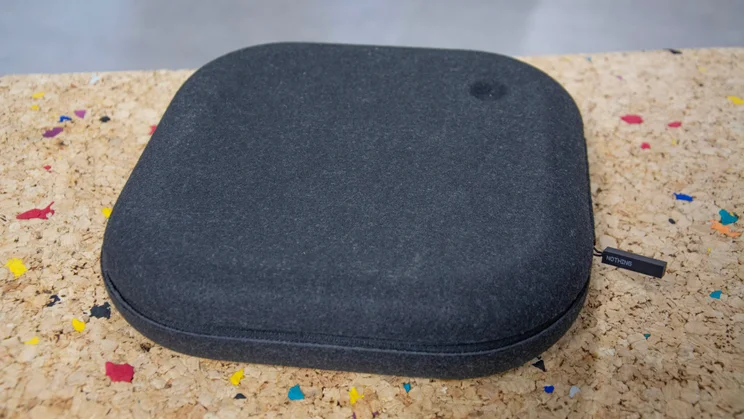
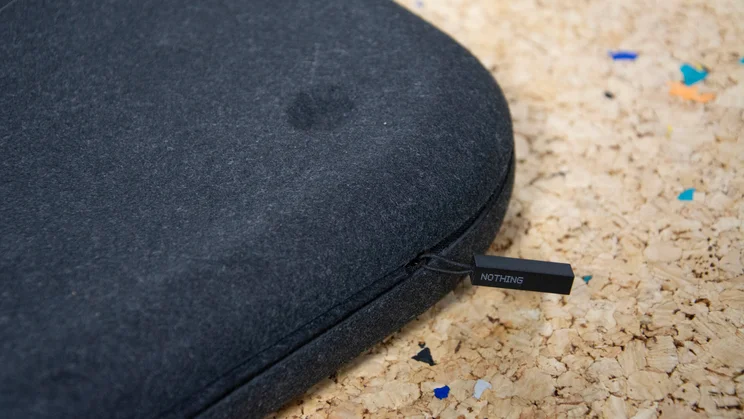
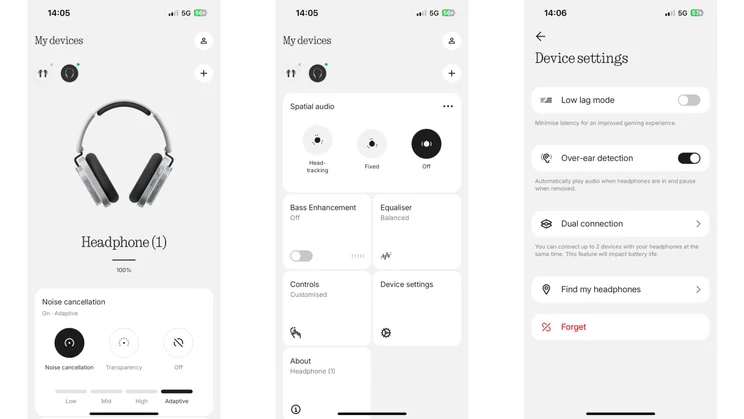
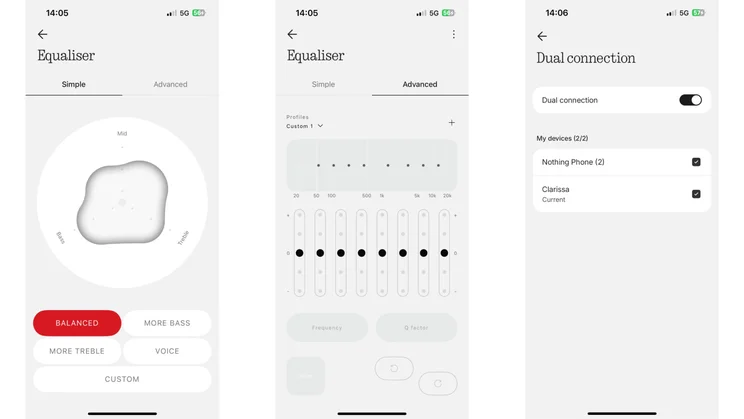
- Unique and eye-catching design
- Effective noise cancellation
- Clever physical control system
- Uninspiring sound quality
- Not the most comfortable
- Earcups can’t be folded
Nothing’s headphones have been a mixed bag since the startup burst onto the tech scene in 2020. Early entries in its true wireless range proved disappointing, but the brand has found its feet with releases such as the Nothing Ear (2024) and Nothing Ear (a).
Critical reception notwithstanding, Nothing has been a big success, amassing millions of social media followers and surpassing lifetime sales of over $1 billion. So, it came as no surprise when the company announced it was broadening its audio horizons by going into partnership with British Hi-Fi manufacturer KEF in May.
The Nothing Headphone (1) are the brand’s first over-ear headphones and deliver sound tuned by KEF wrapped up in an unmistakably Nothing design. That design will prove polarising, but I’m all for it. The Headphone (1) also offer some great features for the money. However, they disappoint in the area you’d least expect them to: audio quality. This, along with a couple of minor niggles, mars what is otherwise a decent debut in the over-ear space.
What do you get for the money?
The Nothing Headphone (1) cost £299, which is a popular price for over-ear noise-cancelling headphones. Marshall’s Monitor III ANC launched for that figure last autumn, while the JBL Tour One M3 and Sony WH-1000XM5 can both be picked up for a similar outlay.
With plenty of prestigious competition, the Headphone (1) can’t solely rely on Nothing’s reputation for industry-disrupting design to convince punters to part with their cash. And, to their credit, they don’t; their specifications and features tick all of the key boxes.
















There’s adaptive noise cancellation for reducing the impact of external distractions, a transparency mode for boosting ambient awareness, support for LDAC, a spatial audio mode with head tracking, wear detection, and the ability to customise the physical controls and audio using the Nothing X app.
There’s also exclusive functionality for owners of Nothing phones, and the Headphone (1) are the first over-ear headphones I’ve tested to have an official IP rating. IP52 certifies them as dust-protected and able to withstand vertically dripping water, i.e. a light rain shower.
Battery life clocks in at up to 35 hours with ANC engaged and 80 hours without it, while five minutes on charge will net you over two hours of playback. Nothing supplies a USB-C to USB-C cable for charging and wired audio, along with a 3.5mm to 3.5mm cable for connecting to devices with legacy ports. These slip neatly into a pouch in the hard-shell carrying case that accompanies the headphones.
What do they do well?
The Nothing Headphone (1) unashamedly stand out from the crowd. To me, they look like the lovechild of the original Game Boy, a Transformer and a cassette player. That’s not a threesome I ever thought I’d write about, but the offspring are surprisingly handsome.
I’m tired of seeing the same old designs trotted out time and again by countless manufacturers; the Headphone (1)’s engaging aesthetic is a welcome deviation from the over-ear norm.
















And boy, do they attract attention. They successfully tap into the rampant individualism that pervades modern society, and I’ve never been so aware of the gaze of strangers as I was when testing the Headphone (1). Eyes seem impulsively drawn to their outlandish design, and I’ve even had people stop me in the street to ask about them.
I want to shout out Alex, who approached me outside Old Street station. He told me the Headphone (1) had been popping off on his social feed and was wondering whether he’d made a mistake buying the Sennheiser Momentum 4 Wireless a couple of weeks prior. Given that the Sennheisers sit at the opposite end of the Bland-Exciting spectrum of headphone design, I can understand why he found himself yearning for something with more character.
















But headphones like these are not for everyone. If you’re not comfortable in your own skin and don’t like drawing attention to yourself, they won’t be for you. Even as someone who considers himself relatively extroverted and admires the artistry shown by Nothing’s design team, the “notice me” signals that the headphones sent out were overwhelming at times.
Existential musings aside, I appreciated several of the things the Headphone (1) bring to the table. I was taken in by their physical controls, which are implemented in a creative yet effective way.
















On the rear-facing flat edge of the right earcup, you’ve got a “Roller” and “Paddle”. The former serves multiple purposes: clicking it in plays or pauses your audio, long pressing it switches between ANC and Transparency modes, while rolling your finger over it to the left or right decreases or increases volume. I found these controls very easy to use, although it took me a while to work out the pressure required to adjust volume.
The Paddle handles media controls and is even simpler to use. Flicking the paddle to the right skips forward a track, while holding it to the right speedily scrubs through what you’re listening to. Pushing the paddle in the opposite direction enables you to restart the track that’s playing; holding it rewinds to your favourite part of a particular song.
There’s also a “Button” on the outside of the right earcup. By default, a single press of this activates “Channel Hop”, a feature exclusive to Nothing phones. I tested the Headphone (1) alongside the Nothing Phone (2), so I was able to play around with it, and I rather liked it.
















You’re able to link supported third-party services and add channels and playlists from them to your favourites list. Once added, you can switch between them at the press of a button. Only Spotify and Apple Music are currently available, but swapping freely between those platforms and my preferred content on each felt great.
If you’re not fussed about channel hopping, the button can be reassigned to handle other functions. You can use it to engage Voice AI courtesy of ChatGPT, change your EQ preset, mute the mic, launch the News Reporter widget or activate spatial audio. Overall, the Headphone (1)’s controls get a big thumbs up.
I also greatly appreciate that the headphones support both USB-C and 3.5mm connections in addition to LDAC streaming over Bluetooth 5.3. I’m a big believer in the more connectivity options the merrier, and Nothing has got you well-covered here. Bundling both the cables you’ll need to connect physically to any source is a nice touch, too.
















The Headphone (1)’s active noise cancellation and transparency modes are also handled well. You can choose between three levels of ANC – Low, Mid and High – or have the headphones work adaptively to apply a specific level of attenuation based on your surroundings.
Rarely did the headphones seem to use anything other than the full power of the noise cancellation while in Adaptive mode, but given the majority of my testing conditions (at home, in the office and commuting) featured reasonable levels of external noise, this is not particularly surprising. And the ANC itself does a solid job of dampening distractions. Nothing claims up to 42dB attenuation effective up to 2kHz, and I certainly noticed a significant reduction of troublesome low-end frequencies. But the effective range stated seems generous, as voices remained audible with ANC set to High.
What could they do better?
The fact that I’ve not touched on audio quality in the section above will have set alarm bells ringing. Unfortunately, the Headphone (1) failed to meet the high expectations I had after learning of Nothing’s partnership with KEF.
They’re not shocking in the audio quality department by any means. The default Balanced audio mode delivers a pleasing level of detail, particularly if you’re digesting a high-resolution file using LDAC, as I was when listening to a 96kHz/24-bit recording of The Smiths’ There Is a Light That Never Goes Out. Easily glossed-over details were highlighted throughout, and the undulations in Morrissey’s voice were communicated crisply.
















I found little to complain about in terms of the way the Headphone (1) conveyed the conflicting individual elements of a track like Linkin Park’s One Step Closer, either. The electric guitars were reproduced authoritatively, as were Chester Bennington’s raging vocals. However, I was never gripped by the Headphone (1)’s sonic abilities. My craving was for an espresso, but more often than not, it felt like I was being served a latte. Smooth and balanced, admittedly, but short on immediacy and impact.
Things improved when I started experimenting with the robust set of EQ customisation options in the Nothing X app. Bumping up the 20Hz, 50Hz and 100Hz frequency bands a few notches, engaging Bass Enhancement at Level 2 and making small tweaks around 1KHz resulted in a more satisfying experience.
But such adjustments weren’t able to combat the Headphone (1)’s surprisingly constricted soundstage. While the tone and timbre of instruments and voices were articulated naturally, the whole never sounded greater than the sum of the parts, nor did it deliver the engaging expansiveness I wanted.
















The spatial audio mode isn’t anything to write home about, either. I’m a fan of spatial audio done right, but here it just doesn’t add much. Engaging it on Hozier’s Too Sweet lifted the perceived origin of sound from the bottom of my ears to around my eyebrows. However, I found positional audio cues lacked precision, and the effect didn’t enhance my immersion. The head tracking responds quickly and sensibly to your head movements, though.
While I’m fond of the Headphone (1)’s looks, I didn’t find them as comfortable to wear as many of the options I’ve tested in their price range. Sony, Bowers & Wilkins, JBL, and Sennheiser are just a few of the brands whose over-ear cans rested more cosily atop my bonce.
Not that the top of my head was the issue; I’ve no complaints about the headband. But the way the earcups stifled my ears meant I struggled to wear the headphones comfortably for extended periods, and I generally felt relieved to remove them after a lengthy commute or home listening session. It’s also worth noting that the earcups can’t be folded and, due to the shape of their housing, they don’t sit particularly comfortably around your neck.
Should you buy the Nothing Headphone (1)?
If you want headphones that break the design mould, you probably made up your mind about the Nothing Headphone (1) as soon as you saw them. They’re a genuinely unique-looking take on the over-ear format and guaranteed to turn heads. Whether that’s a desirable quality is up for debate, though.
I like the design a lot, and can live with the public scrutiny it attracts. I struggled to live with the fit over extended periods, however, and there are several other pairs of headphones I’d rather listen to available for a similar price. I’d take the Sony WH-1000XM5 or the Bowers & Wilkins Pi7 S2e over these any day.
That said, the Headphone (1) have enough going for them to be considered a solid first attempt at over-ear headphones from a burgeoning brand. The almost inevitable Headphone (2) have a solid platform to work from. In the meantime, I’m sure plenty of people will succumb to their disruptive design.







